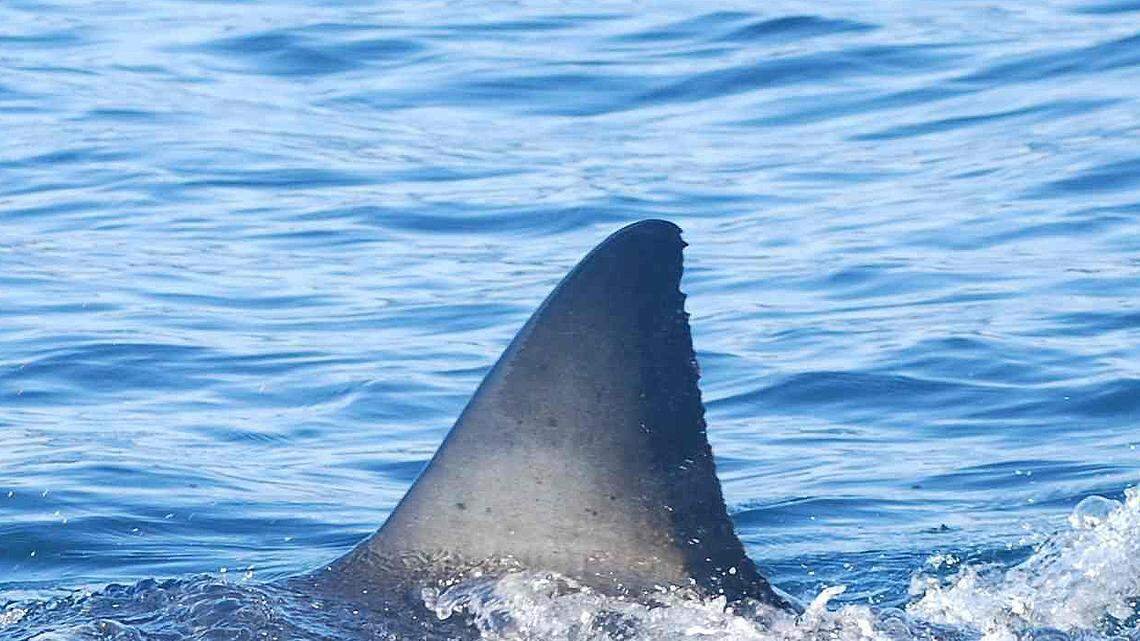1,000-Pound Great White Shark Spotted Swimming Off Myrtle Beach Coast
MYRTLE BEACH, S.C. — A massive Great White shark weighing more than 1,000 pounds was detected off the Myrtle Beach coast Friday morning, marking another exciting visit from one of the Atlantic’s most tracked ocean predators.
The shark, known as Webster, pinged off the Grand Strand around 10:46 a.m. on October 24, according to OCEARCH, a global nonprofit that researches and tracks large marine animals through satellite tagging.
Meet Webster: A 12-Foot, 1,008-Pound Giant
Webster is an adult male Great White shark measuring over 12 feet long and weighing approximately 1,008 pounds. Researchers first tagged him in Mahone Bay, Nova Scotia, on September 29, 2025, as part of an ongoing study to understand shark migration patterns along the Atlantic coast.
Each time a tagged shark surfaces, its tracking device sends a “ping” — a signal that allows scientists and the public to follow its movements in real-time.
Webster’s latest ping placed him just offshore from Myrtle Beach, where he appears to be following the typical southward migration route that Great Whites take during late fall and winter.
Named After a Shark Enthusiast and WWII Hero
OCEARCH named Webster in honor of David Webster, a World War II soldier, author, and shark enthusiast, who wrote “Myth and Maneater: The Story of the Shark.” Tragically, Webster lost his life at sea, and this shark’s name serves as a tribute to his passion for marine life and exploration.
Annual Shark Migration Along the Carolinas
Marine biologists say it’s normal for Great Whites to appear near South Carolina this time of year as they migrate from colder northern waters to warmer southern habitats.
“This seasonal movement helps sharks access richer feeding areas and more stable temperatures,” OCEARCH researchers explained.
While sightings of Great Whites can stir public excitement, experts emphasize that the presence of these apex predators is a positive indicator of a healthy marine ecosystem.
Unique Tracking and Identification
According to the University of California, Davis, each Great White shark has distinctive markings on its dorsal fins, which scientists use for individual identification in addition to satellite tags.
These markings, combined with movement data, help researchers map out migration corridors, feeding zones, and breeding areas critical to shark conservation.
Public Safety and Awareness
Though encounters with Great Whites are rare, marine safety experts urge beachgoers and boaters to remain aware of wildlife while in the water. Sharks generally avoid human interaction, and most sightings occur far offshore.
OCEARCH provides live updates on Webster and other tagged sharks through its online tracker and mobile app, allowing the public to follow their journeys across the Atlantic in real time.
As of Friday afternoon, Webster appears to be continuing south — possibly heading toward the waters off Georgia and northern Florida, where he and other sharks may spend the winter months.
For those along the South Carolina coast, Webster’s visit is a reminder of the incredible biodiversity just beneath the waves.
Stay updated on marine wildlife and environmental news at SaludaStandard-Sentinel.com.







